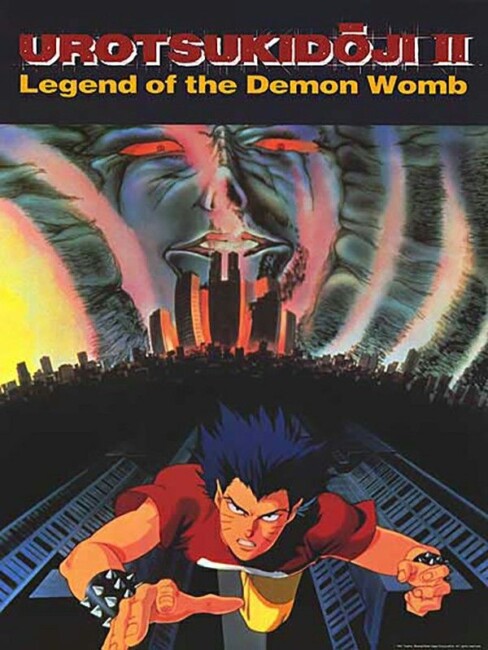aka Urotsukidoji: Birth of the Overfiend
(Shin Chojin Densetsu Urotsukidoji: Mataiden)
Crew
Director – Hideki Takayama, Screenplay – Noboru Aikawa, Story – Toshio Maeda, Photography Director – Hideo Okazaki, Music – Masamichi Amano, Animation Supervisor – Shiro Kasami, Art Direction – Hitoshi Nagao. Production Company – Toshio Maeda
Plot
Takeuchi Kiru, a cousin of the overfiend Nagumo, arrives in Tokyo but demonic forces attack the plane he is in, causing it to crash. Takeuki is the only survivor and Nagumo offers his blood for a transfusion. As he recovers, Takeuki finds himself now transforming into a demon as a result of the transfusion. Megumi of the beast people is attracted to Takeuki and tries to help him as he struggles against the murderous creature that emerges from within. At the same time, Myuni Hausen, the son of Adolf Hitler’s personal demonologist, comes determined to kill Nagumo and declare himself the King of Evil, a demonic being that is even more powerful than the overfiend.
Legend of the Overfiend (1989) was one of the modern classics of Japanese anime. There is an extraordinarily perverse streak of sexuality and fetishism that runs throughout much anime (and manga) and Legend of the Overfiend manage to depict this at its most pathological. Legend of the Overfiend was followed by two sequels – Urotsukidôji: Legend of the Demon Womb here and Urotsukidôji: Curse of the Overfiend (1990). All three were made in the Japanese phenomenon of the OVA – films that are made in short episodes that are each released directly to video.
Legend of the Overfiend was an classic with its extraordinarily perverse sexuality and epic-sized scenes of mass destruction, not to mention its crafting of a complex, apocalyptic demonology. Legend of the Demon Womb emerges as a lesser film. Certainly, it is much better animated.
The animation is still limited but it comes filled with striking and often beautiful vistas – characters flying against blimps in the sky, the flaming harbour and the prologue with an Allied bomber going down in the burning skies over Germany as below Nazis try to conjure demons from the abyss. Returning director Hideki Takayama has certainly pumped up the perverse sexuality – we see a female victim tied naked on top of a Ferris Wheel; a screaming woman raped by a demon and then being torn apart at the torso; the heroine abducted by a demon and raped in the skies over Yokohama; the hero in a foursome with three woman who then turn into a bare-breasted succubus with three snake heads riding him; and all sorts of casual throwaway scenes with the hero performing cunnilingus on his schoolgirl girlfriend in her bedroom and a businessman getting a blowjob while driving down the highway. It was enough to have the film banned in Australia.
On the other hand, the perverse imagery does not seem as wild this time around. In particular, the film fails to build to the world-shatteringly apocalyptic in the same way that Legend of the Overfiend did. There is an impressive enough climactic battle with demons fighting and the good guys trying to appeal to the human element that remains inside Takeuki – it is just that as anime goes it is routinely spectacular and certainly fails to stretch the mind in the same way that the climax of the original did.


